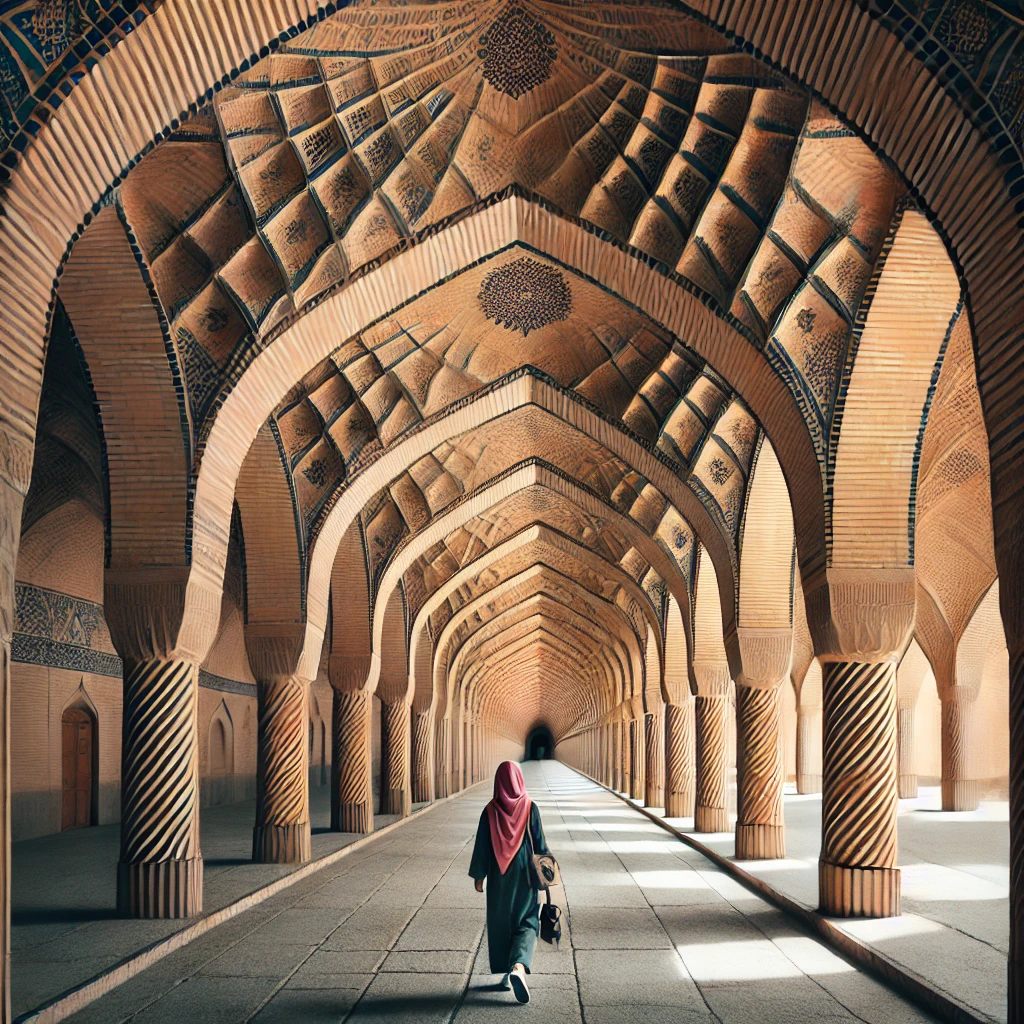ChatGPT:
Shiraz is a city in southwestern Iran, known for its rich history, cultural heritage, and significance in Persian literature and art. It is the capital of Fars Province and one of the oldest cities in Iran, with a history that dates back to at least 2,000 BCE.
Key Aspects of Shiraz:
- Cultural Heritage:
- Shiraz is often referred to as the “City of Poets” because it was home to two of Iran’s most famous poets, Hafez and Saadi. Their mausoleums are located in the city and are popular sites for both locals and tourists.
- The city is also known as the “City of Gardens” due to its many historical gardens, such as the Eram Garden (a UNESCO World Heritage Site) and Afif-Abad Garden.
- Historical Significance:
- Shiraz has been a major center of trade, arts, and religion throughout history. It was the capital of Persia during the Zand dynasty in the 18th century.
- The city is home to several ancient mosques, bazaars, and palaces, including the Vakil Mosque, Vakil Bazaar, and the Arg of Karim Khan.
- Architecture:
- Shiraz is famous for its stunning Islamic architecture. The Nasir al-Mulk Mosque, also known as the “Pink Mosque,” is renowned for its beautiful stained glass windows that create a vibrant display of colors when the sunlight shines through.
- Religion:
- Shiraz is an important religious center in Iran, with several significant shrines, including the Shah Cheragh Shrine, a major pilgrimage site for Shia Muslims.
- Wine History:
- Historically, Shiraz was known for its wine production, and the name “Shiraz” is often associated with the Shiraz (Syrah) grape variety. However, wine production ceased after the 1979 Islamic Revolution due to the prohibition of alcohol in Iran.
- Modern Shiraz:
- Today, Shiraz is a vibrant city with a mix of modern amenities and traditional Persian culture. It is a center for education, with several universities and research institutions.
- The city has a pleasant climate, especially in spring, making it a popular destination for tourists seeking to explore its cultural and historical sites.
Shiraz offers a blend of ancient history, poetry, and beautiful architecture, making it one of the most enchanting cities in Iran.
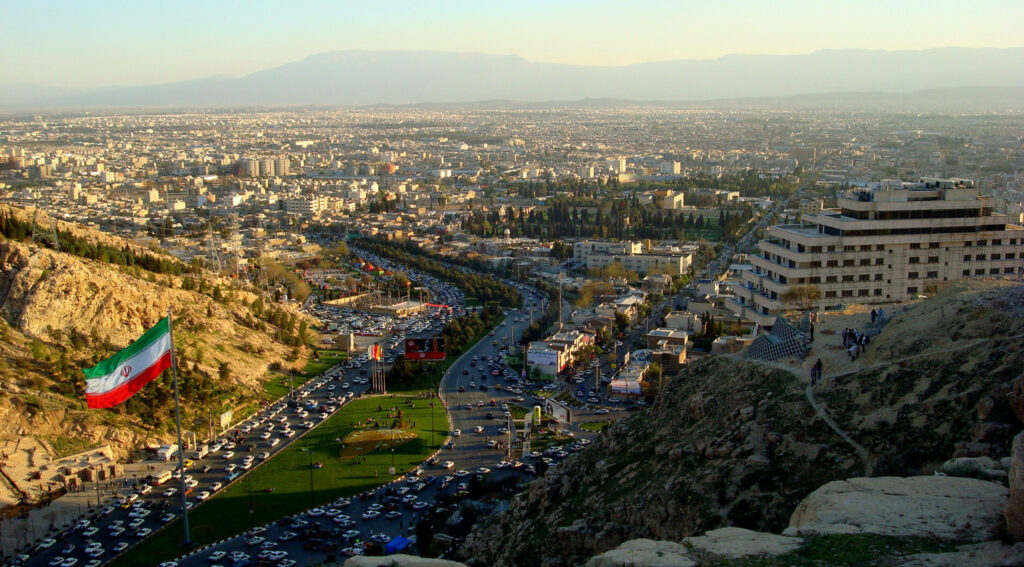
Origin and Early History:
Shiraz, one of Iran’s oldest cities, has origins that trace back to around 2,000 BCE. Archaeological evidence suggests that human settlements existed in the region during the Achaemenid Empire (550–330 BCE), and the city may have been founded earlier than this period. The first recorded mention of Shiraz appears in Elamite clay tablets from the 2nd millennium BCE, where it is referred to as “Tirazis.”
Pre-Islamic Period:
During the Sassanian Empire (224–651 CE), Shiraz was a relatively small town, overshadowed by nearby cities like Istakhr, the capital of Fars Province, and Persepolis, the ceremonial capital of the Achaemenid Empire. However, it was an important local center due to its strategic location on trade routes.
Islamic Conquest and Early Islamic Period:
Following the Arab conquest of Persia in the 7th century, Shiraz began to grow in importance. The city became the capital of Fars Province under the Umayyad and Abbasid caliphates. By the 9th century, Shiraz had developed into a major city, benefitting from its strategic position along the trade routes that connected the Persian Gulf to the interior of Iran.
During this period, Shiraz also became a center for Islamic learning, attracting scholars and artists. The city’s growth was further spurred by the influx of Arab settlers and the development of agricultural lands around the city.
The Buyid Dynasty (934–1062):
Shiraz’s prominence increased significantly during the Buyid dynasty, a Persian dynasty that ruled much of modern-day Iran and Iraq. In 934, Shiraz was made the capital of the Buyid emirate of Fars. The city prospered under Buyid rule, becoming a major cultural and intellectual hub. Many of the city’s historic structures, such as mosques and libraries, were built during this time.
The Seljuk and Mongol Periods:
During the Seljuk period (11th–12th centuries), Shiraz continued to flourish. However, the city faced challenges during the Mongol invasions of the 13th century. Despite the destruction brought by the Mongols, Shiraz was spared the worst of the devastation, largely due to the diplomacy of its rulers, particularly the poet and mystic Saadi, who helped negotiate the city’s peaceful surrender.
The Zand Dynasty (1751–1794):
The most significant period in Shiraz’s history came during the Zand dynasty, when the city became the capital of Persia under Karim Khan Zand. From 1762 to 1794, Shiraz was the political and economic center of Persia. Karim Khan Zand embarked on extensive building projects in Shiraz, constructing palaces, mosques, bazaars, and gardens. The Arg of Karim Khan, a citadel, and the Vakil Mosque and Bazaar are among the most famous structures from this period. Shiraz also became a center of Persian art and culture during this time.
Qajar Dynasty and Decline:
After the fall of the Zand dynasty, the capital of Persia was moved to Tehran by the Qajar dynasty in the late 18th century. Shiraz lost much of its political significance, leading to a period of decline. However, it remained an important regional center and continued to be known for its poets, gardens, and wine.
20th Century and Modern Development:
In the 20th century, under the Pahlavi dynasty and the subsequent Islamic Republic, Shiraz experienced modernization and growth. The city became a major center for education, with the establishment of Shiraz University and other institutions. Although the production of wine, for which the city was historically known, was halted after the 1979 Islamic Revolution, Shiraz continued to develop as a center of culture, tourism, and industry.
Cultural Renaissance:
In recent decades, Shiraz has undergone a cultural renaissance, with efforts to restore and preserve its historical sites and monuments. The city has also developed a vibrant cultural scene, hosting festivals, exhibitions, and events that celebrate its rich heritage.
Today:
Shiraz is a bustling metropolis with a population of over 1.5 million people. It remains a major center for education, culture, and tourism in Iran. The city’s rich history, stunning architecture, and association with famous poets like Hafez and Saadi continue to draw visitors from around the world. Shiraz is also known for its gardens, which remain a symbol of the city’s historical connection to nature and beauty.
The city’s development from a small settlement to the cultural capital of Iran is a testament to its resilience and enduring significance in Persian history.

Shiraz is rich in historical monuments and tourist attractions, reflecting its long history and cultural significance. Here is a list of some of the most notable sites:
1. Nasir al-Mulk Mosque (Pink Mosque)
- Famous for its stunning stained glass windows, which create a dazzling display of colors inside the mosque, especially in the morning. It was built during the Qajar dynasty in the late 19th century.
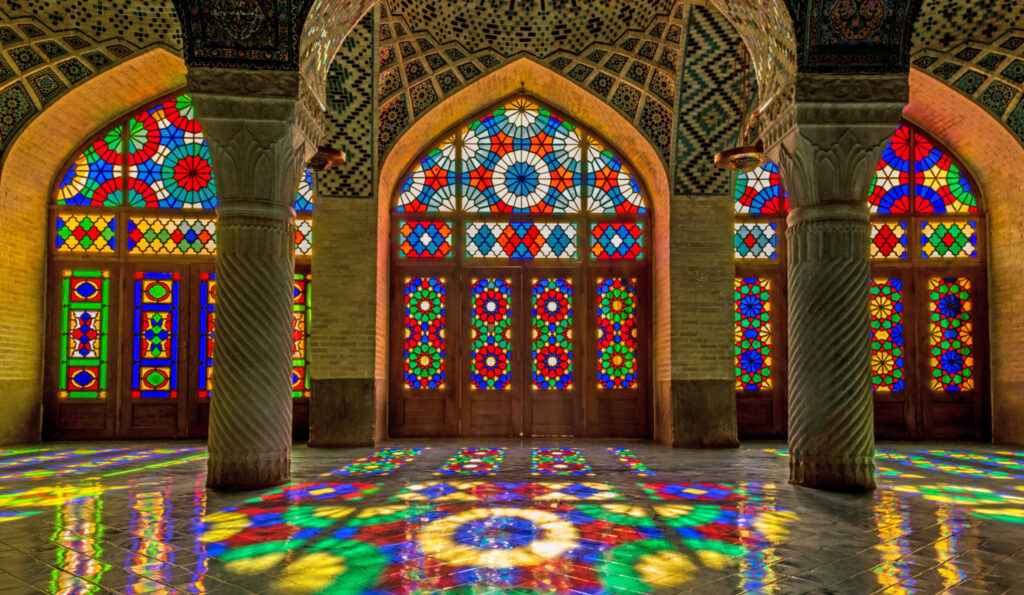
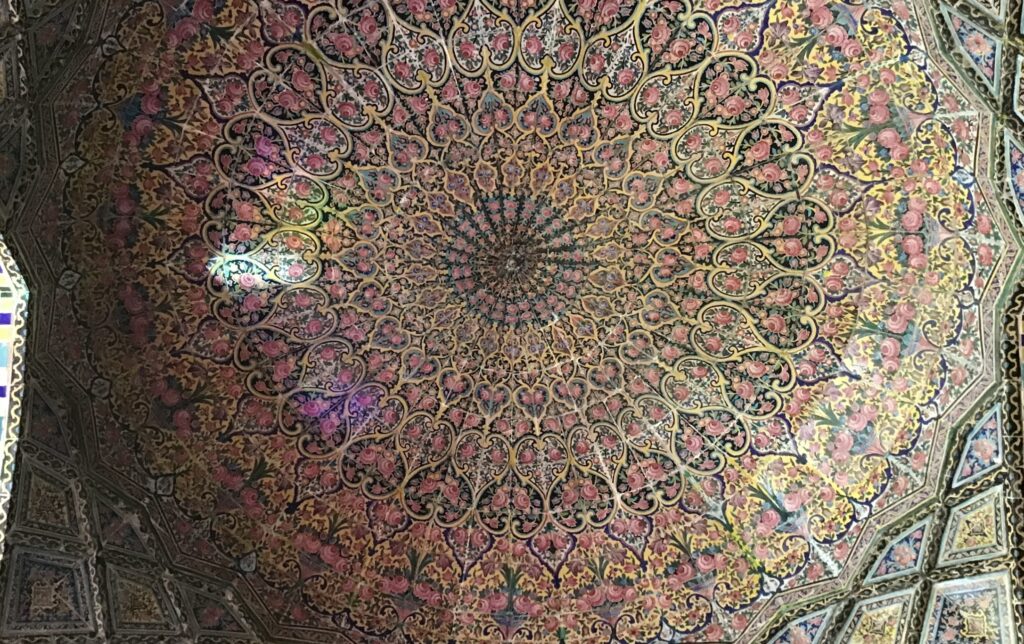
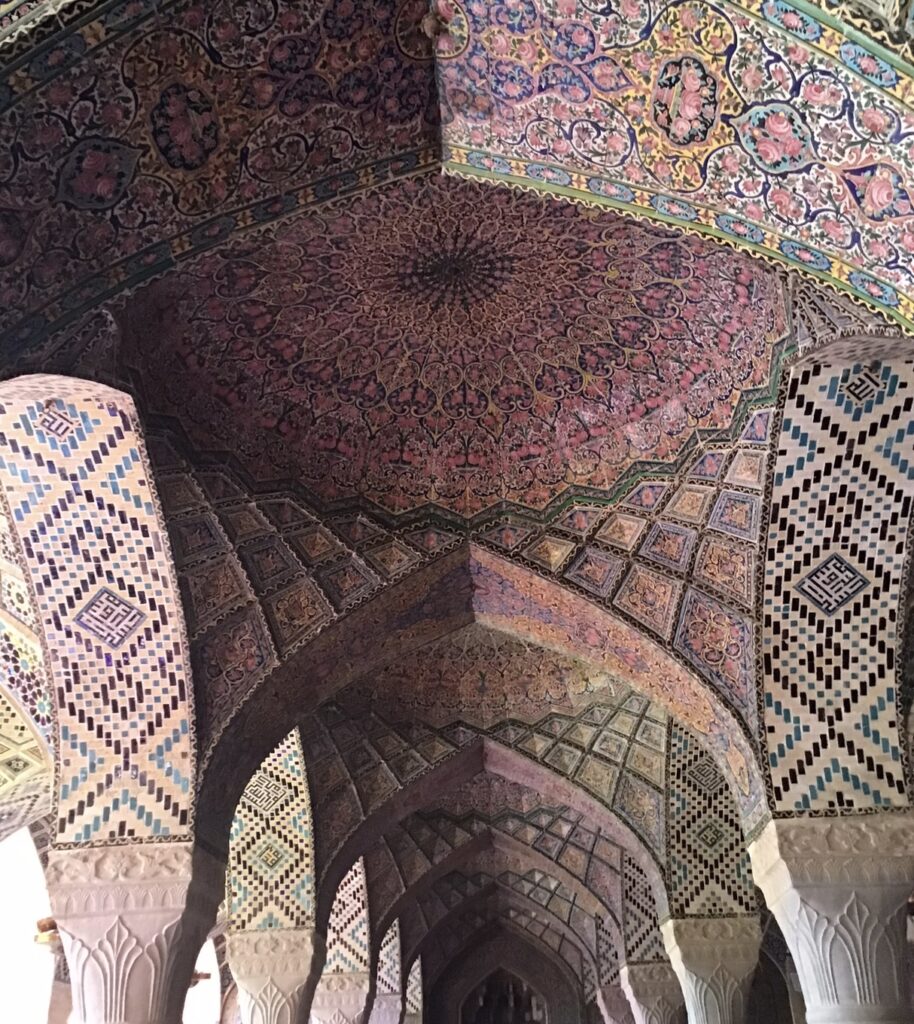
2. Persepolis
- Located near Shiraz, Persepolis was the ceremonial capital of the Achaemenid Empire. This UNESCO World Heritage Site features impressive ruins of palaces, grand staircases, and reliefs that depict the empire’s history.
3. Eram Garden
- A beautiful Persian garden and UNESCO World Heritage Site known for its cypress trees, colorful flowers, and the historic Qavam House within it. It is one of the finest examples of a traditional Persian garden.
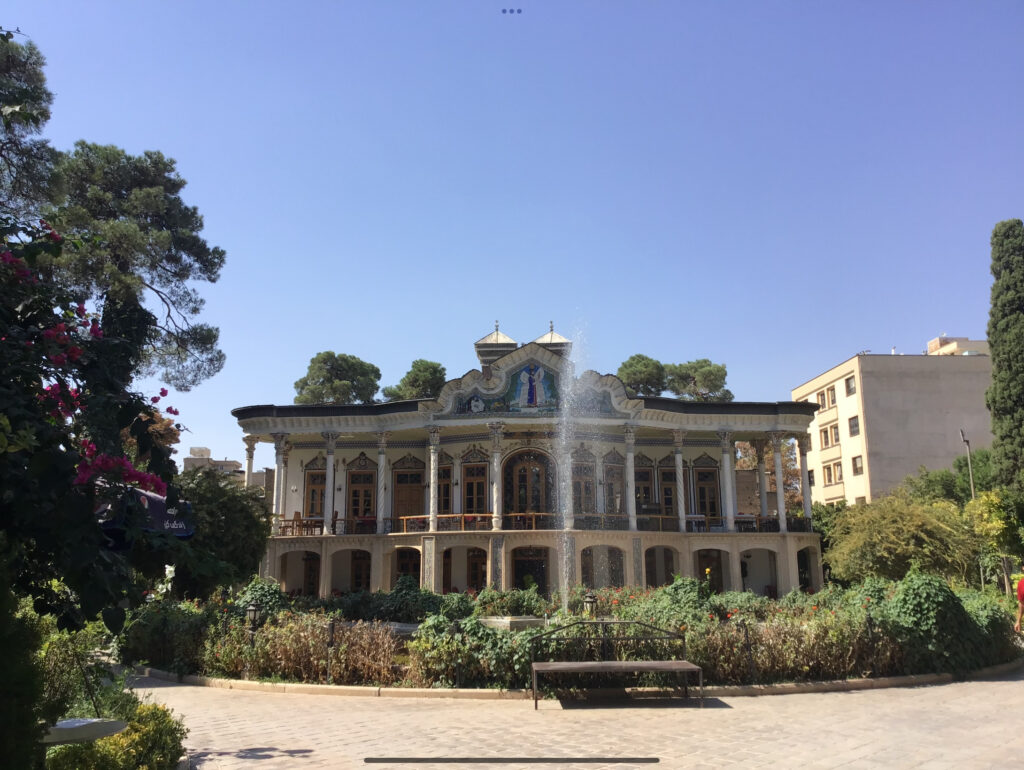
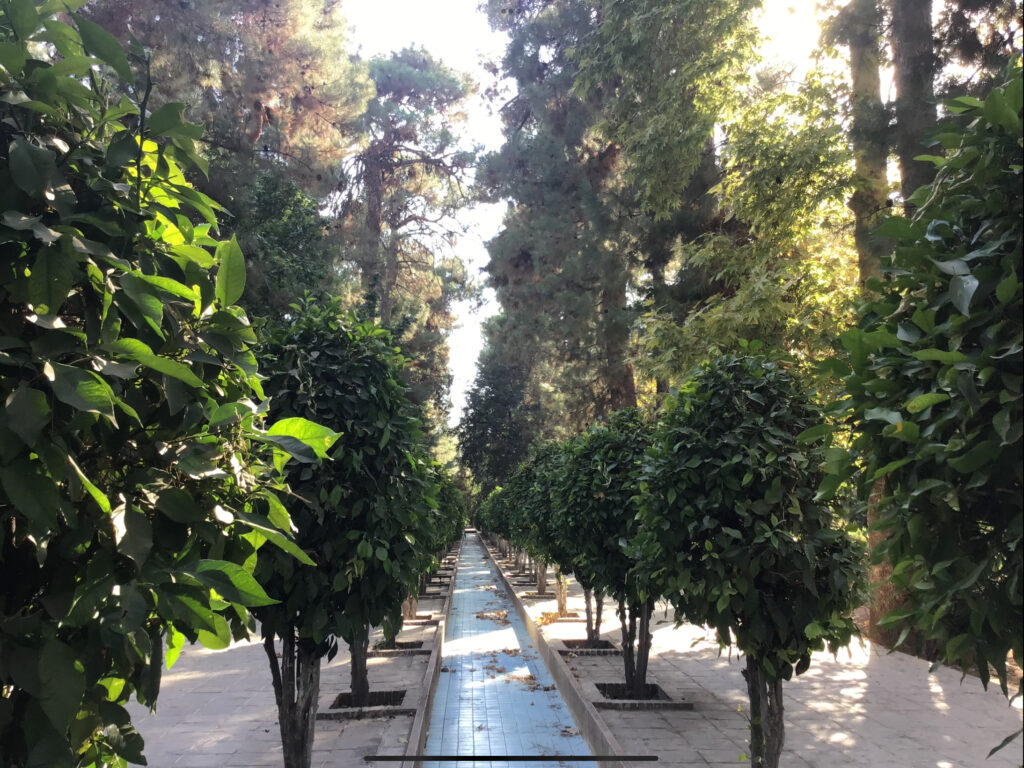
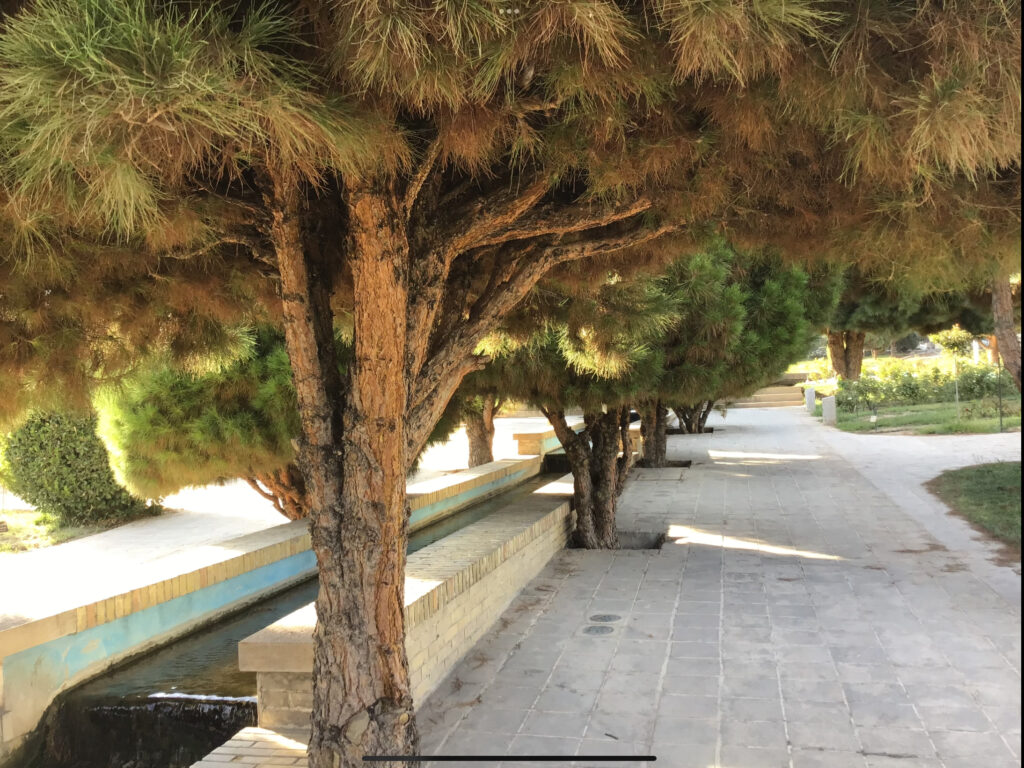
4. Tomb of Hafez (Hafezieh)
- The mausoleum of Hafez, one of Iran’s greatest poets, is a peaceful and popular spot in Shiraz, where people come to pay homage and read his poetry.
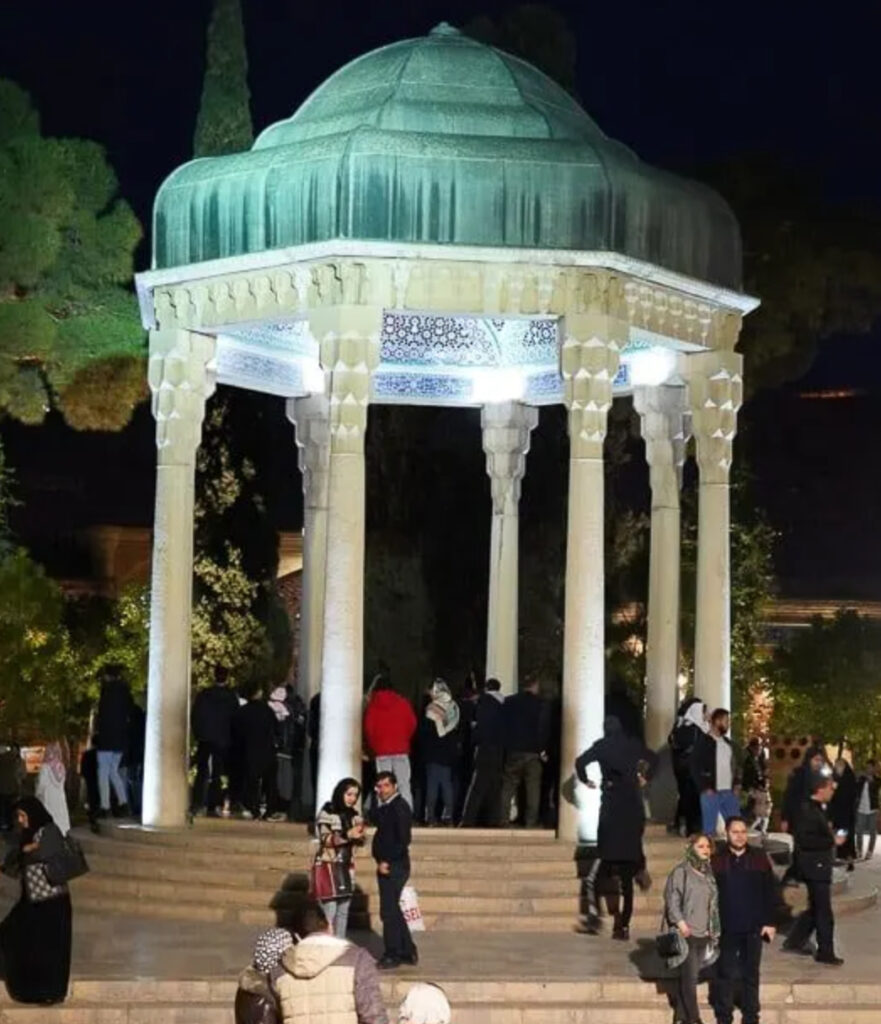
5. Tomb of Saadi (Saadieh)
- This mausoleum is dedicated to Saadi, another of Iran’s most famous poets and a contemporary of Hafez. The site is surrounded by a beautiful garden and a reflection pool.
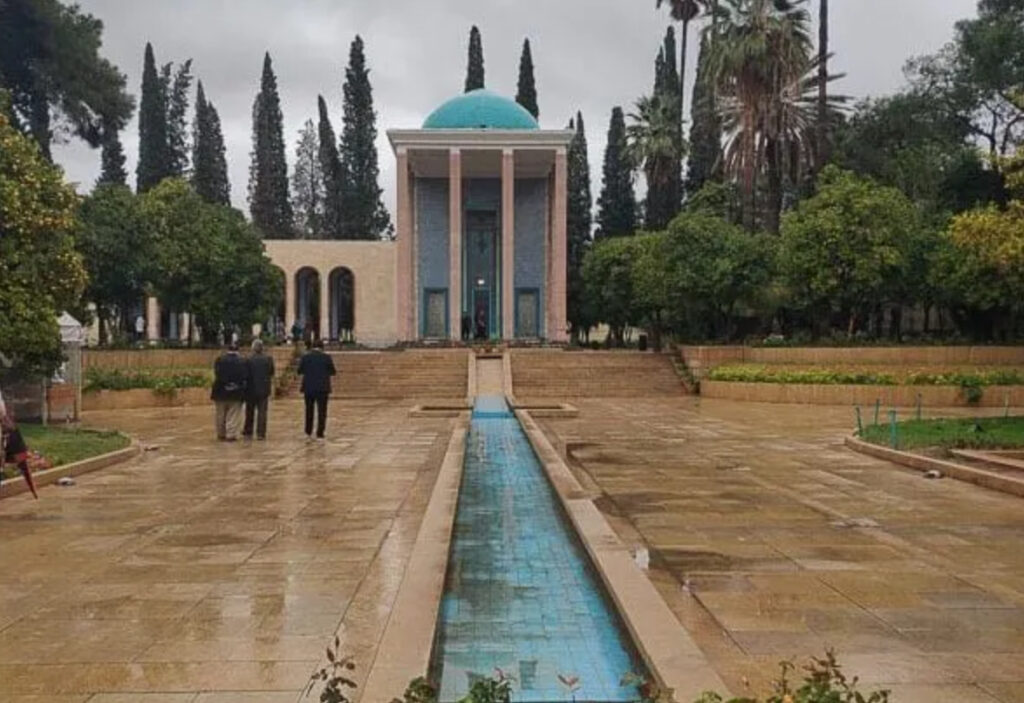
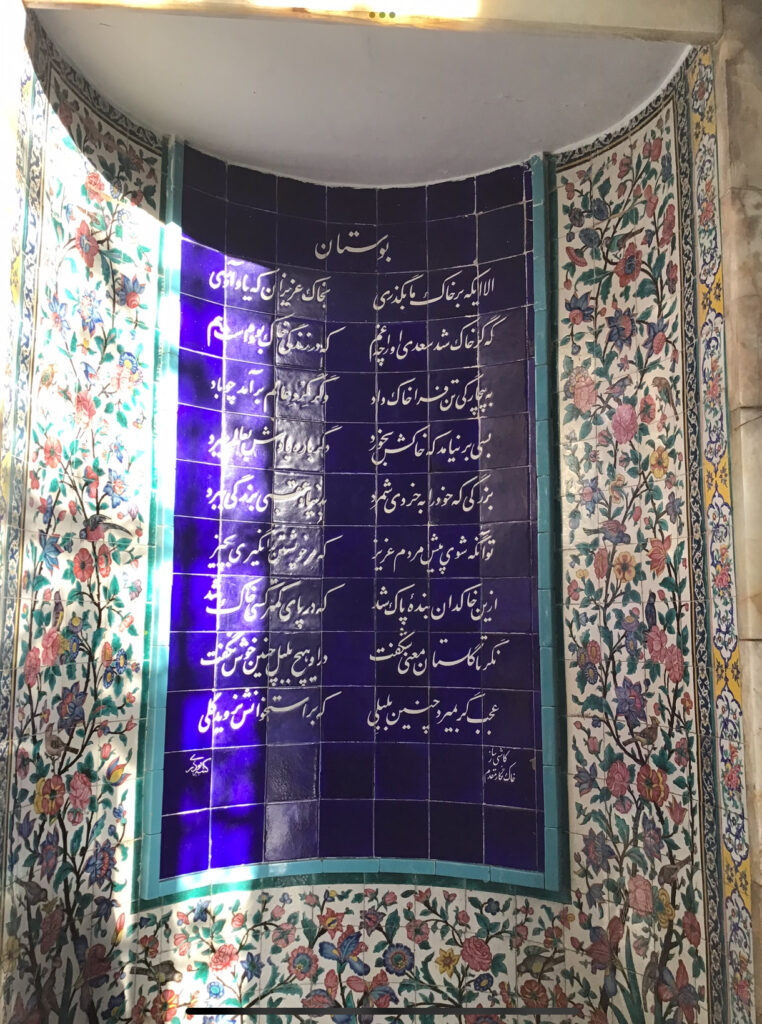
6. Vakil Mosque
- Built in the 18th century by Karim Khan Zand, this mosque is known for its impressive architecture, including its large courtyard, stunning tilework, and the 48 monolithic pillars in the prayer hall.
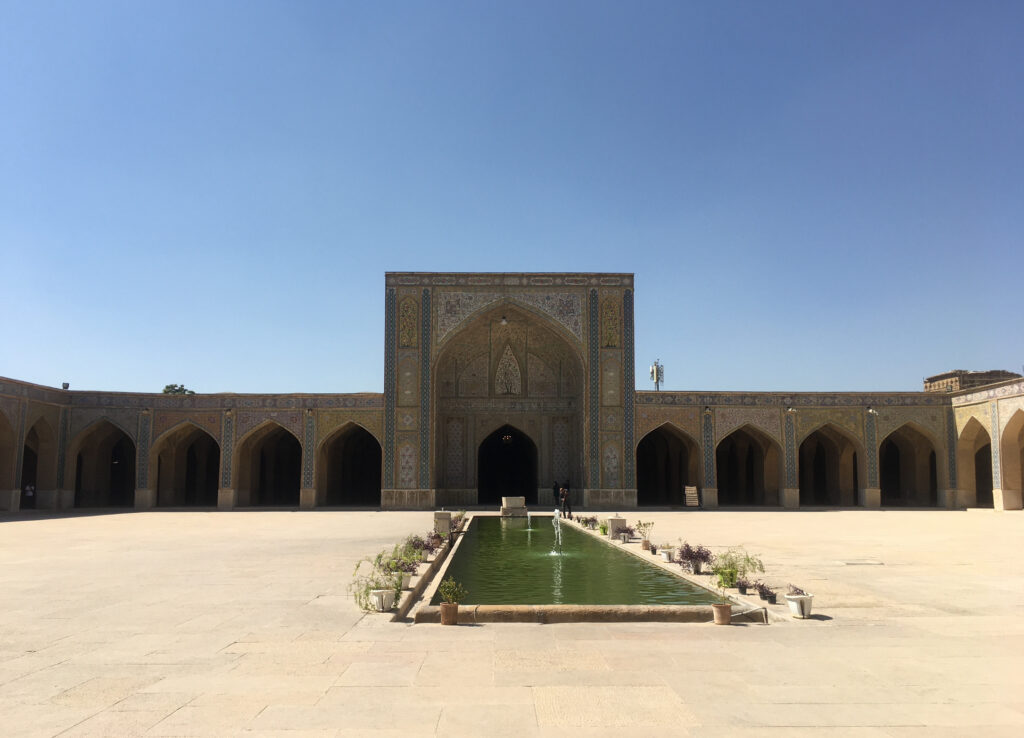
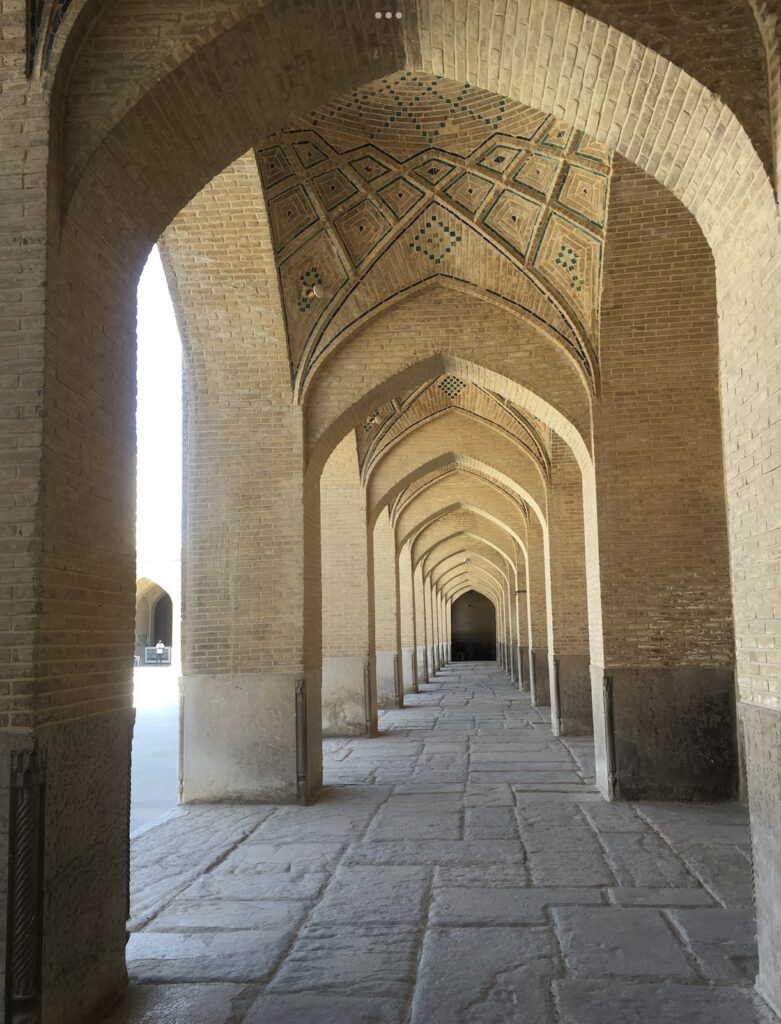
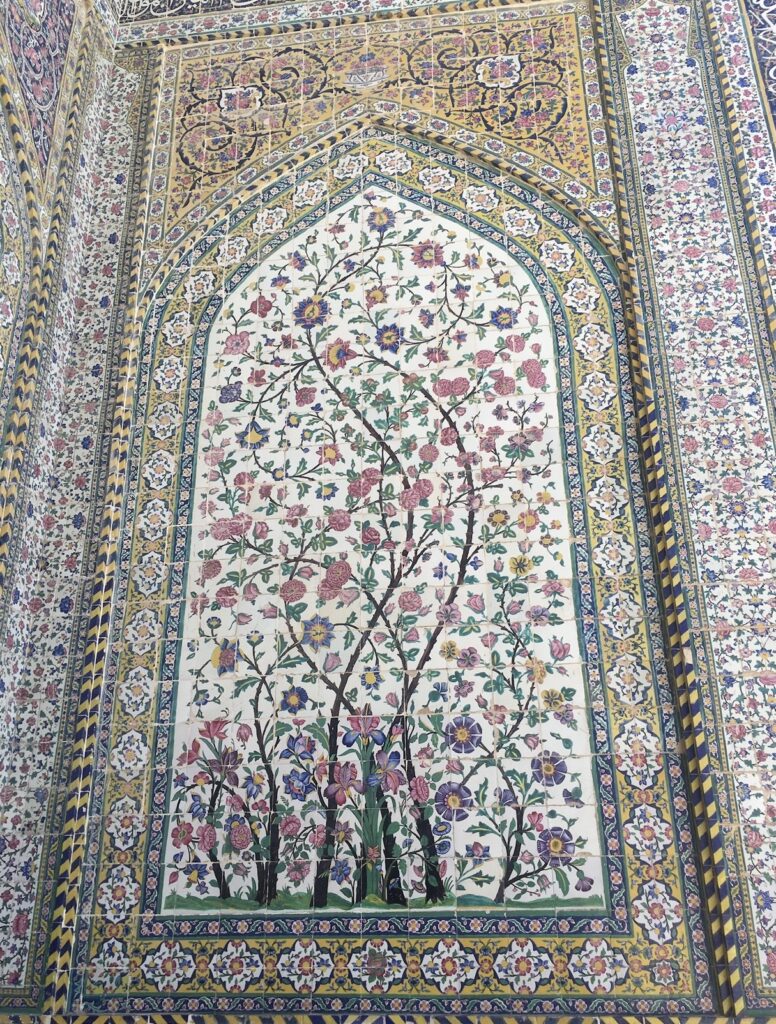
7. Vakil Bazaar
- One of the oldest bazaars in Iran, Vakil Bazaar was also built by Karim Khan Zand. It is a vibrant market where visitors can shop for traditional Persian goods, such as carpets, spices, and handicrafts.
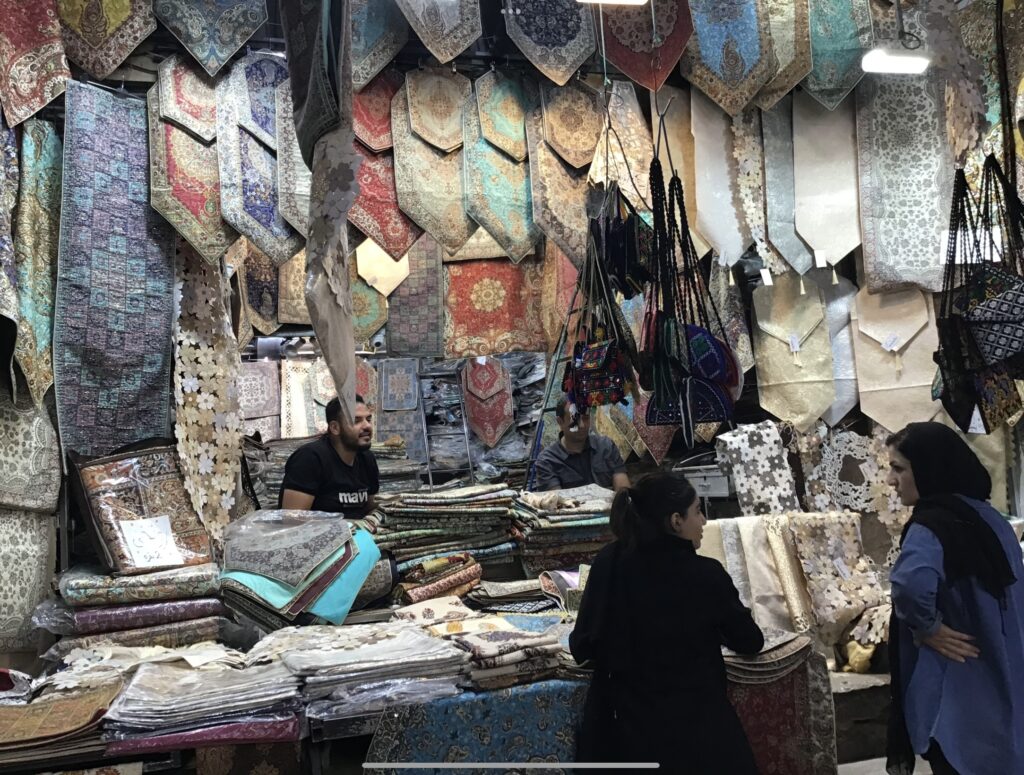
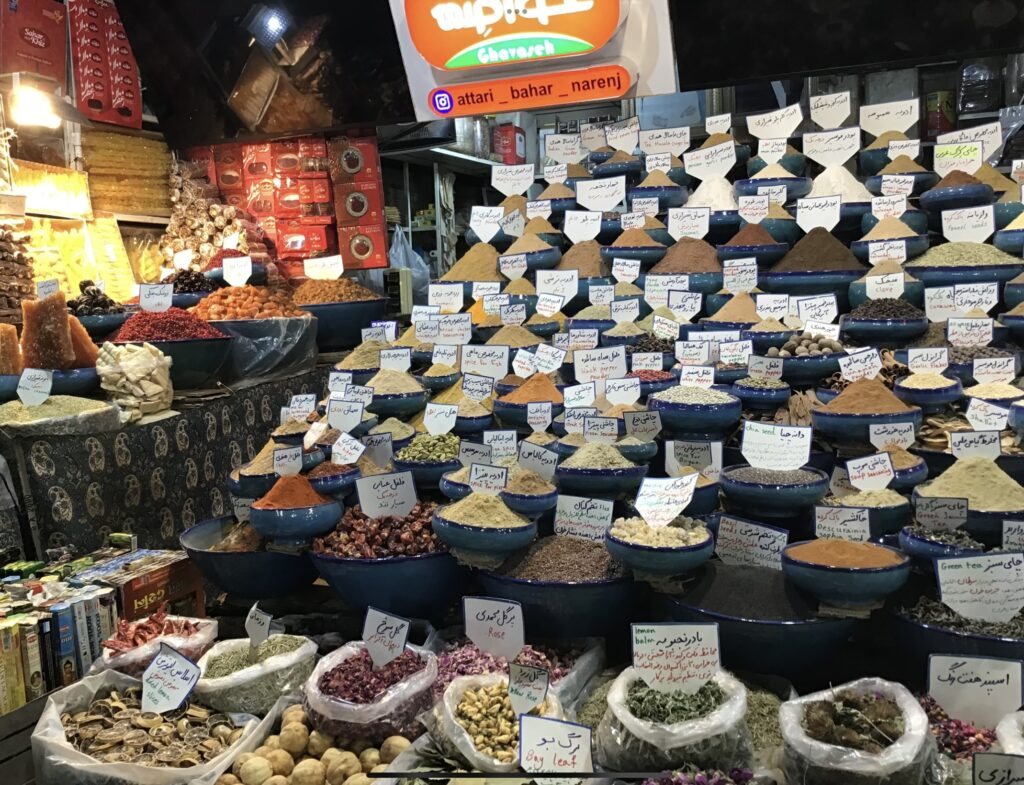
8. Arg of Karim Khan
- A massive fortress in the city center, the Arg of Karim Khan was built in the 18th century by Karim Khan Zand as part of his royal court. The fortress features a large courtyard, gardens, and a museum.
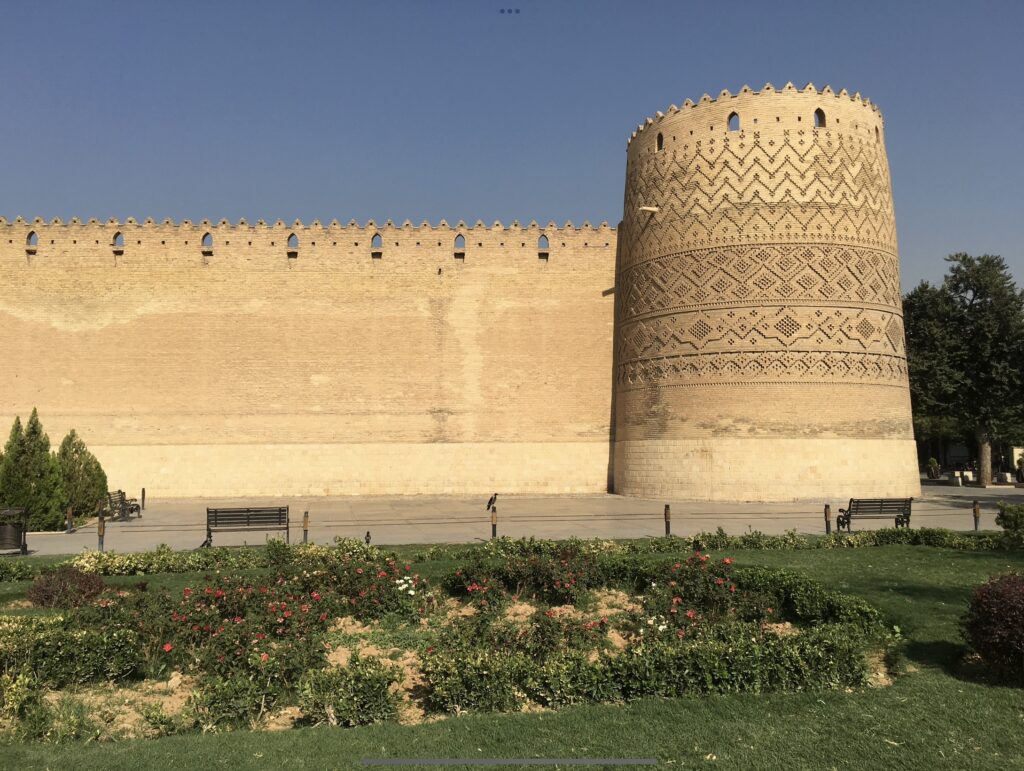
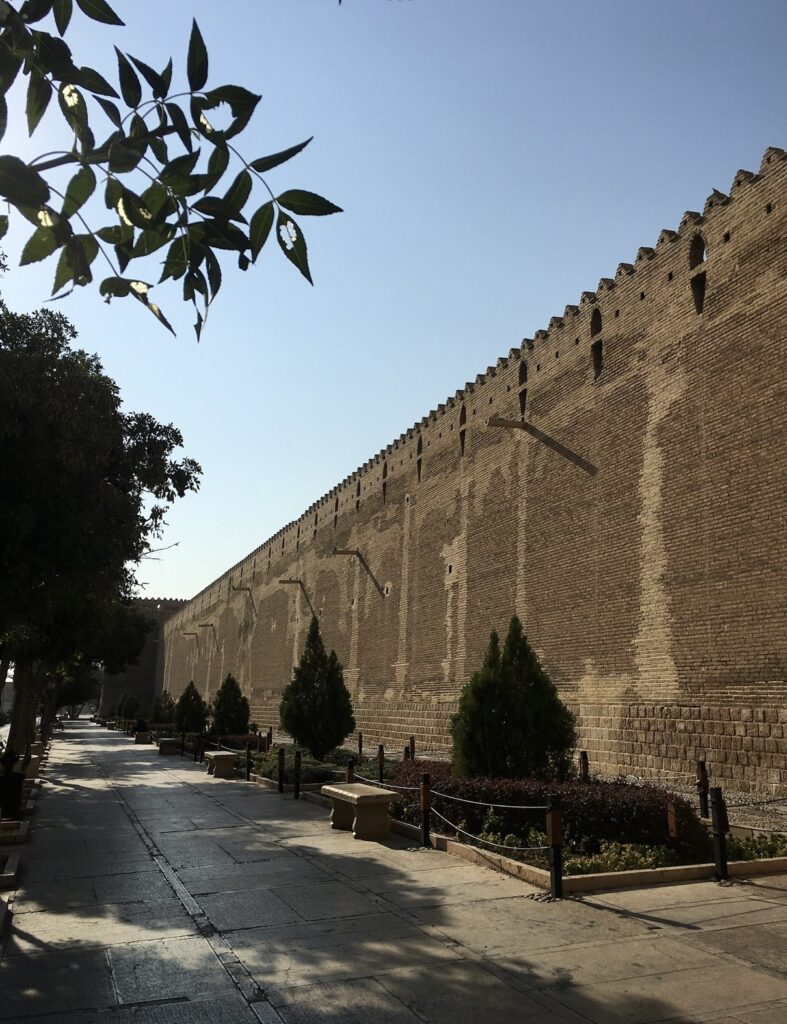
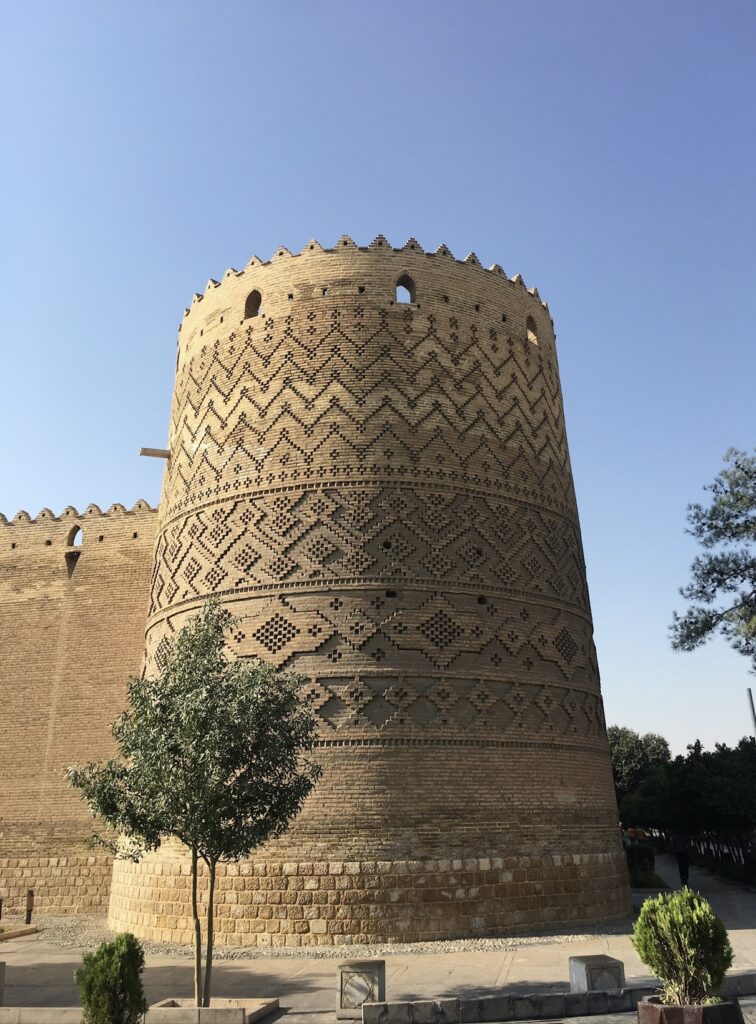
9. Shah Cheragh Shrine
- A significant religious site in Shiraz, the Shah Cheragh Shrine is the burial place of two brothers of Imam Reza, the eighth Shia Imam. The shrine is known for its beautiful mirror work and is a major pilgrimage site.
10. Qavam House (Narenjestan e Ghavam)
- A 19th-century mansion that exemplifies Qajar-era architecture. It is set in a beautiful garden (Narenjestan) and features exquisite tilework, mirrors, and paintings.
11. Afif-Abad Garden (Golshan Garden)
- Another beautiful Persian garden, built in the 19th century, that houses a historical palace and a museum of weapons.
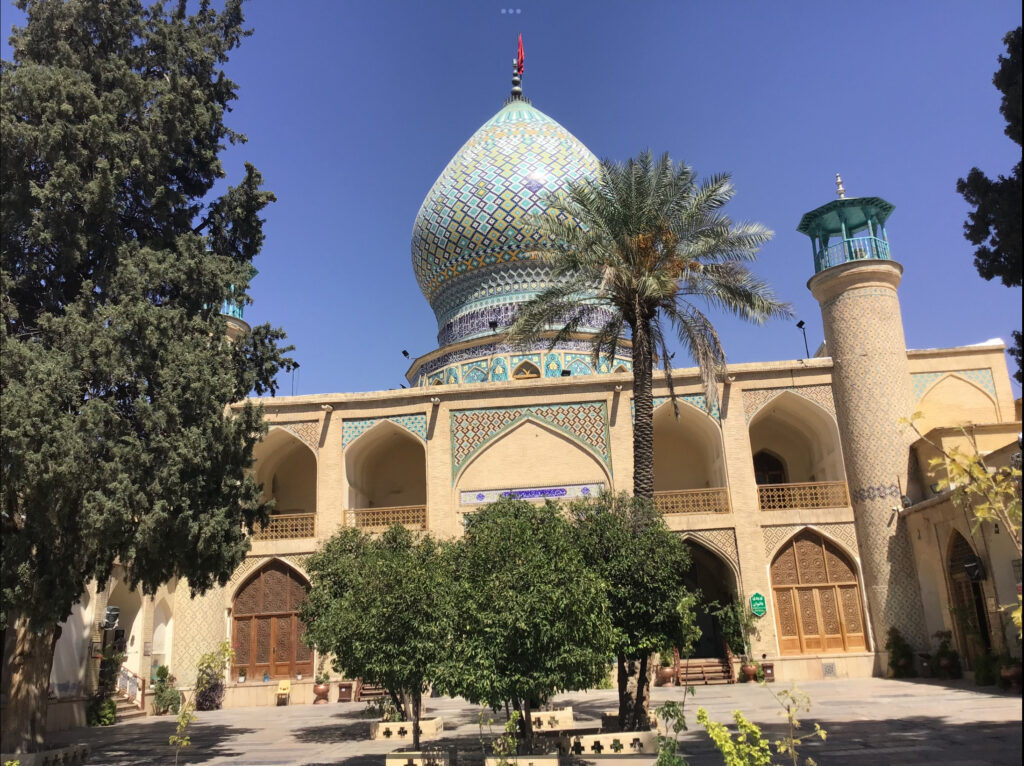
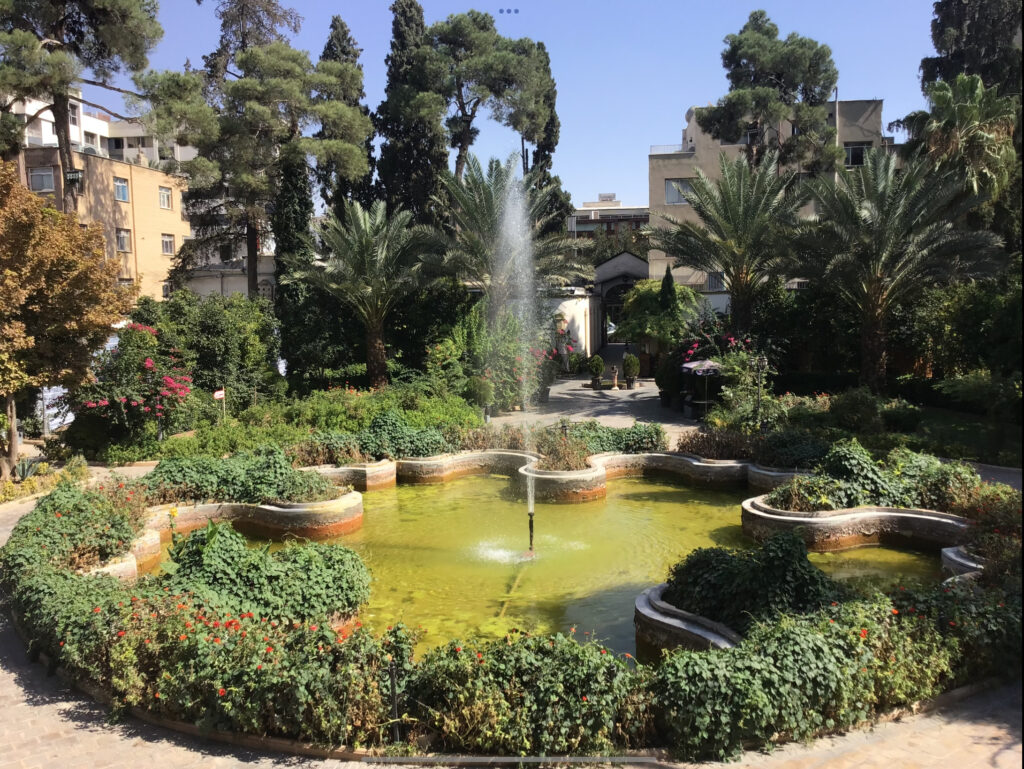
12. Jameh Atigh Mosque
- One of the oldest mosques in Shiraz, dating back to the 9th century. The mosque has been expanded and renovated multiple times over the centuries, featuring a blend of architectural styles.
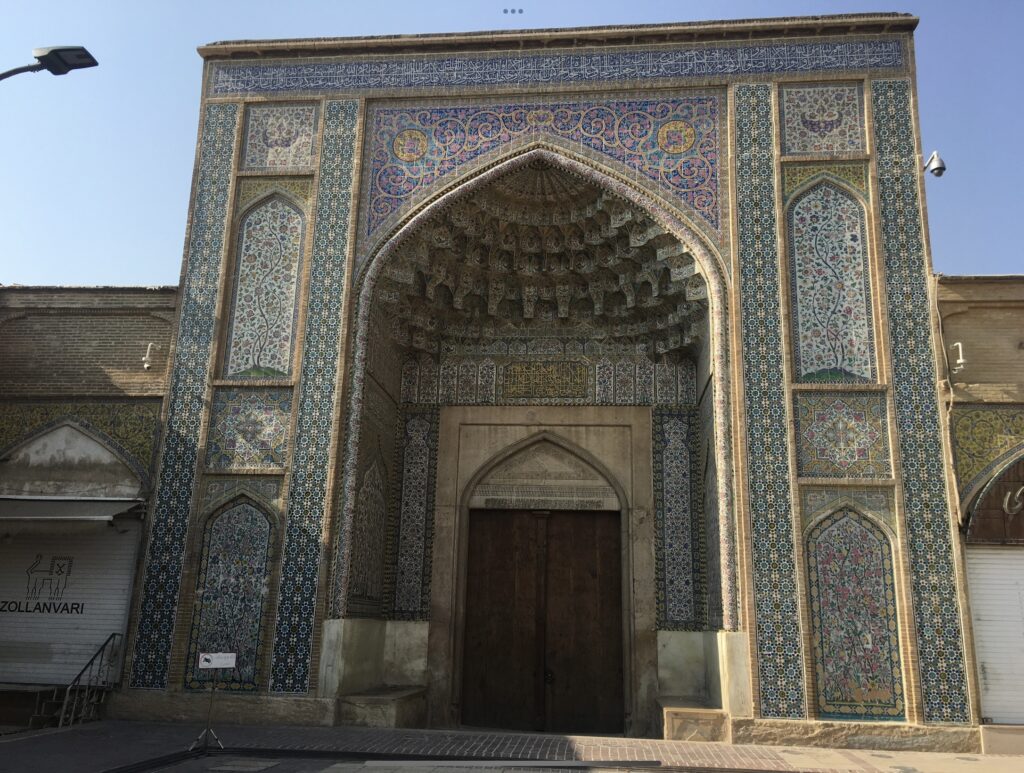
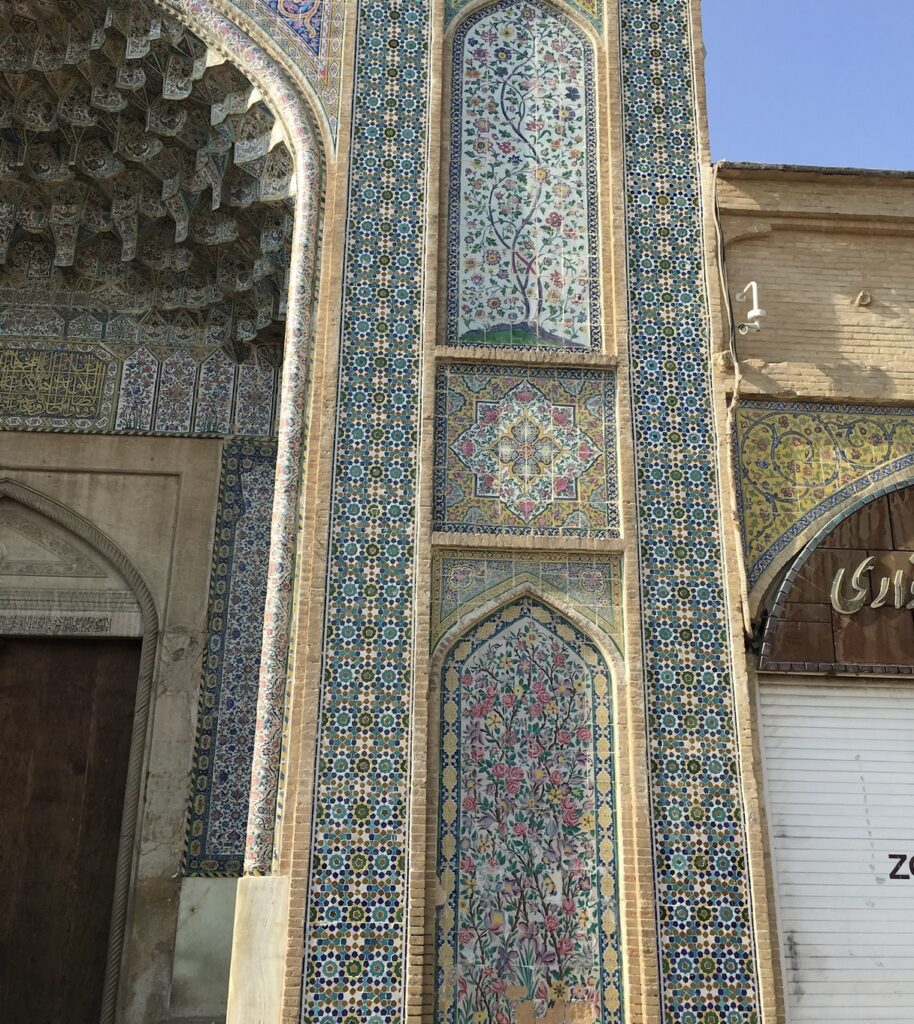
13. Qur’an Gate (Darvazeh Qur’an)
- A historic gate at the entrance of Shiraz, originally built during the Buyid dynasty and later restored by Karim Khan Zand. It is named after the Qur’an that was once placed in a small room atop the gate to bless travelers.
14. Delgosha Garden
- A historic garden near the tomb of Saadi, featuring a pavilion, fountains, and orange trees. The garden is known for its serene atmosphere and beautiful layout.
15. Pars Museum
- Housed in the Nazar Garden, this museum showcases artifacts from the Zand dynasty, including Karim Khan Zand’s sword and other items from the 18th century.
These sites collectively highlight Shiraz’s significance as a center of Persian culture, history, and art. Visitors to Shiraz can immerse themselves in the city’s rich heritage while enjoying its beautiful gardens, historical monuments, and vibrant bazaars.
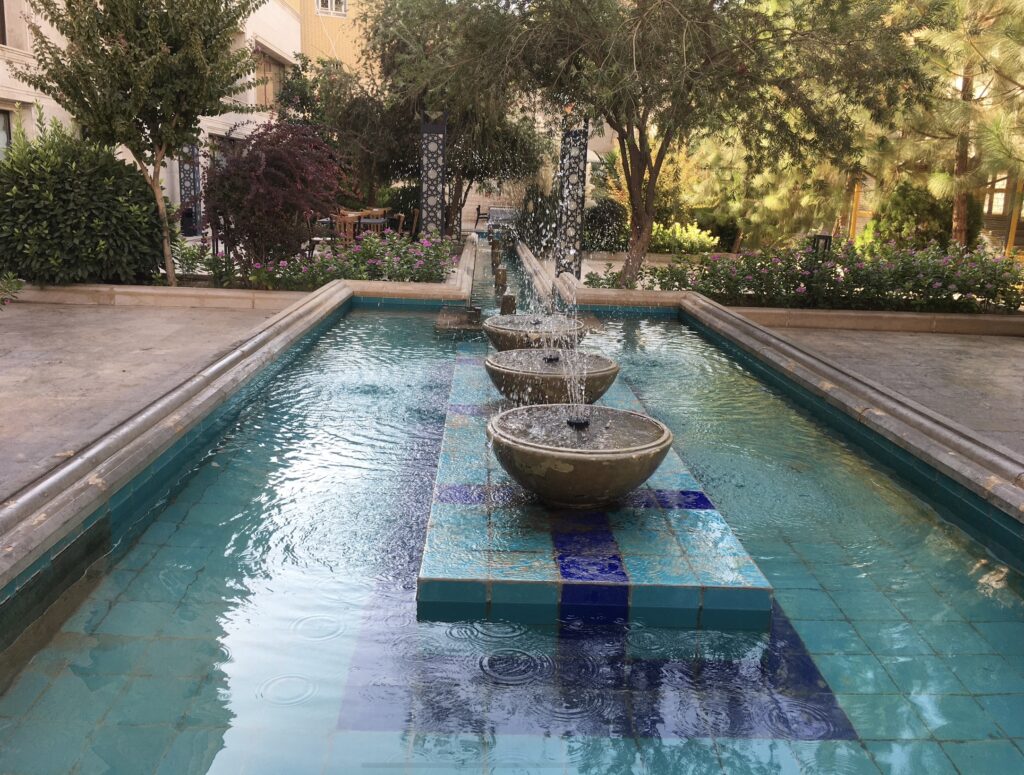
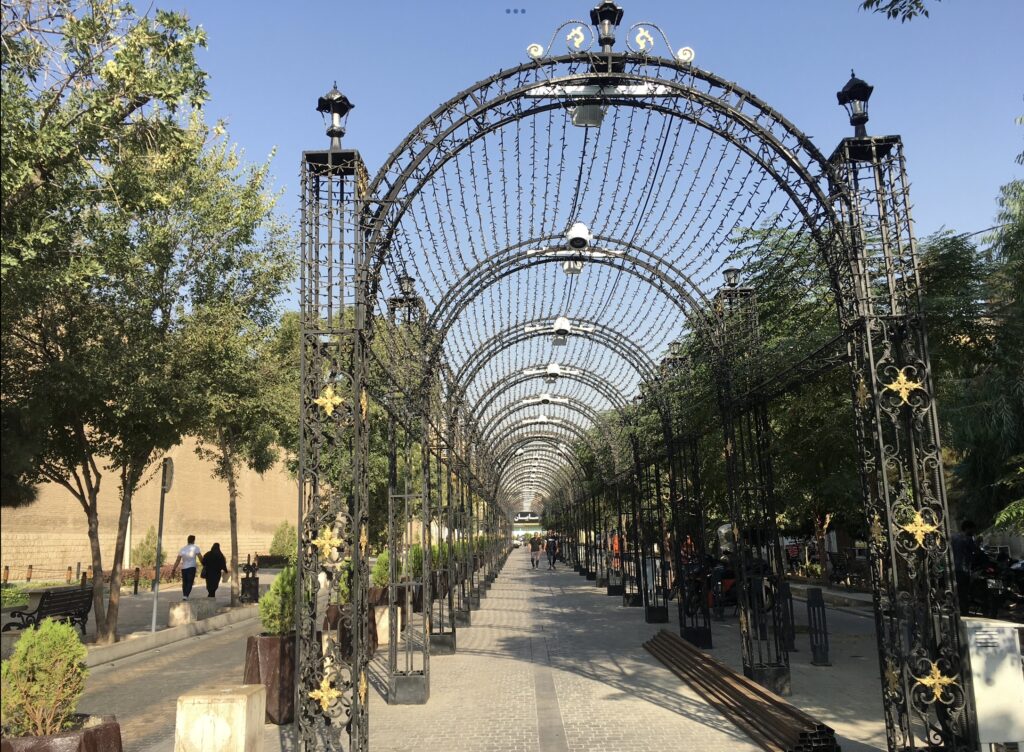
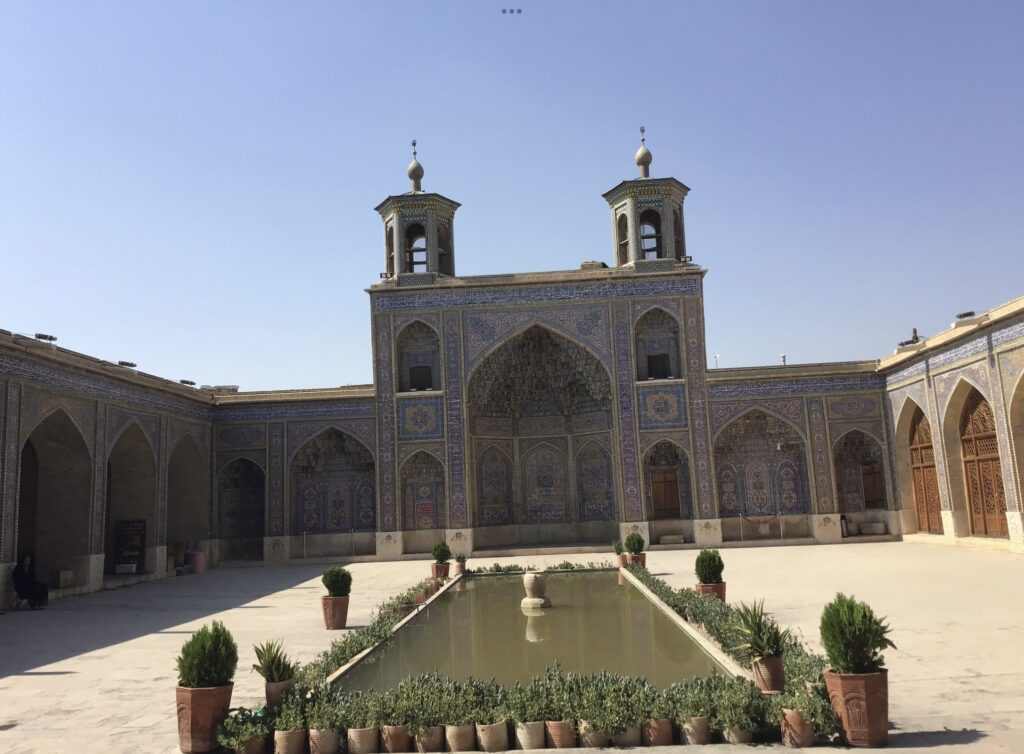
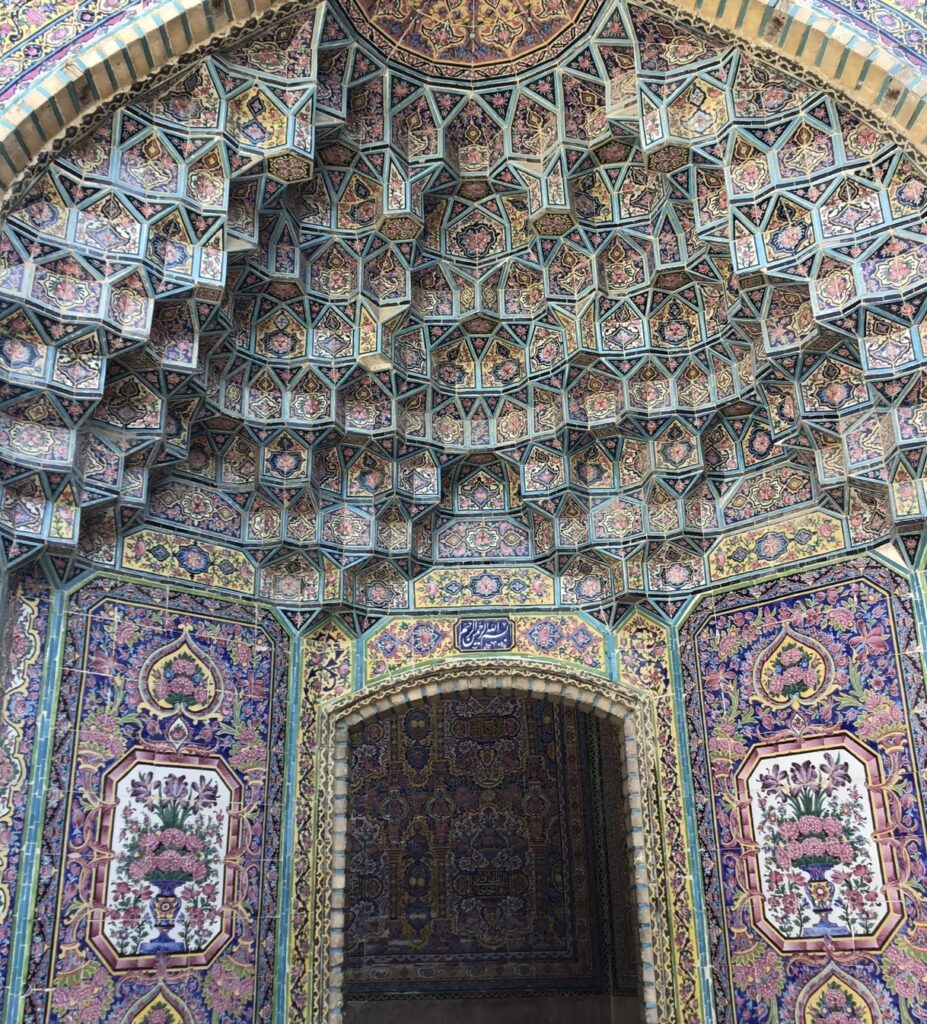
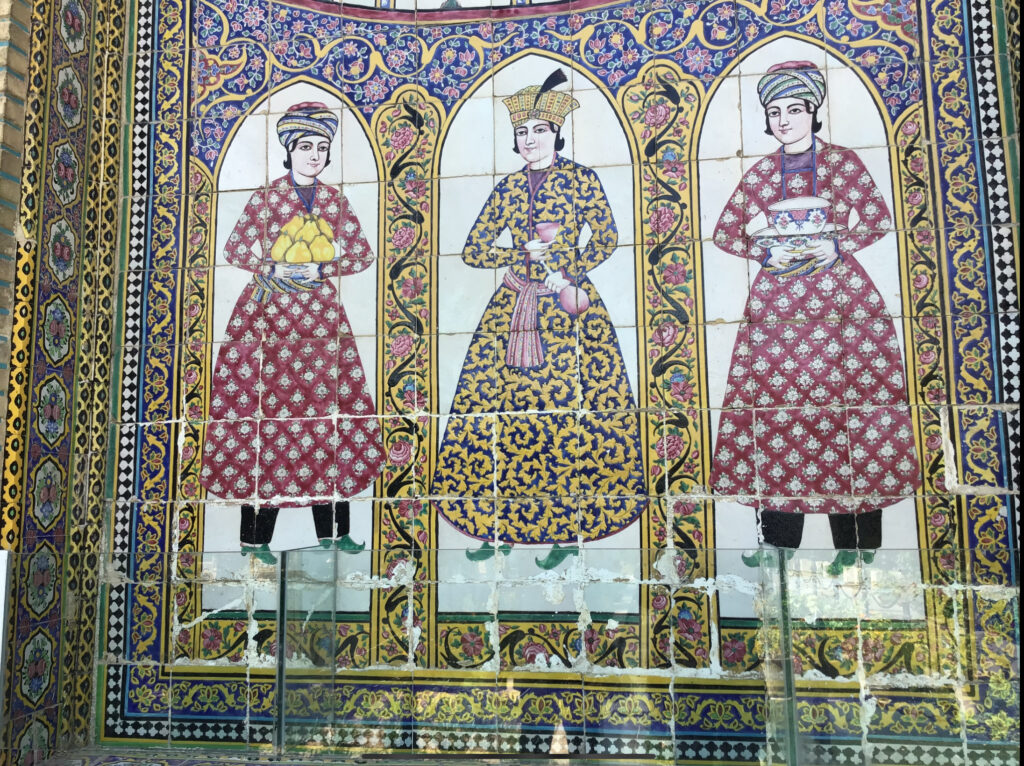
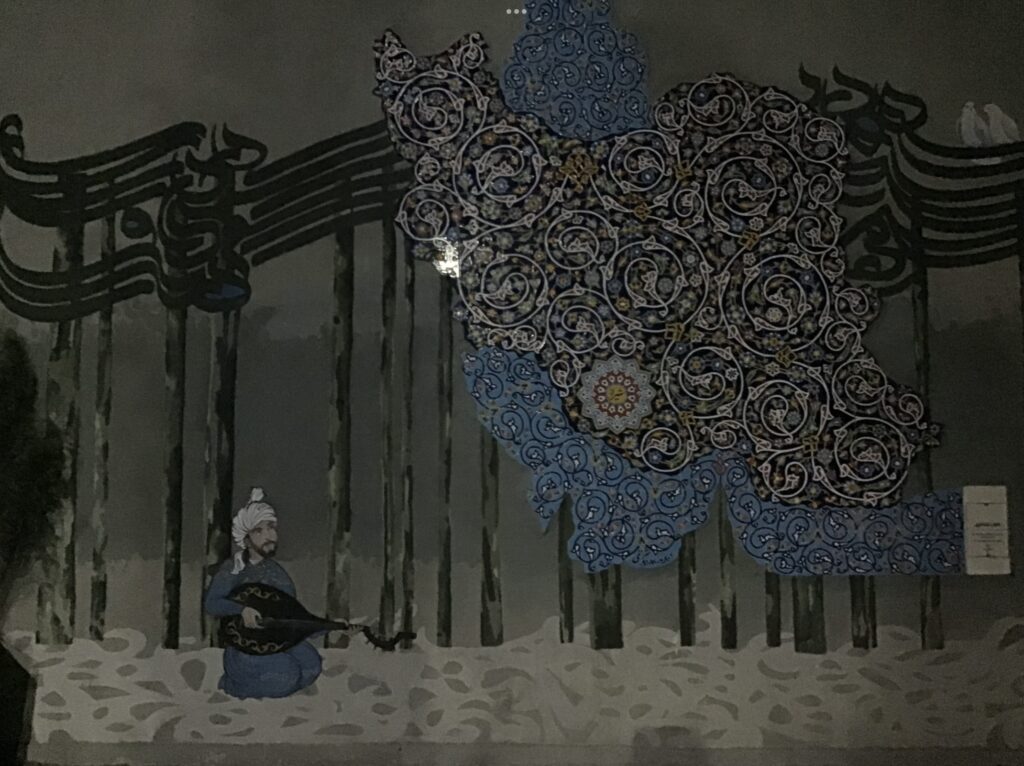
Three-Day Itinerary for Visiting Shiraz
Hotel Recommendation:
Zandiyeh Hotel – Located in the heart of Shiraz, this luxury hotel blends traditional Persian architecture with modern amenities. It’s within walking distance of many major attractions, making it a convenient and unique place to stay.
Day 1: Cultural and Historical Exploration
Morning:
- Nasir al-Mulk Mosque (Pink Mosque): Start your day early to catch the mesmerizing morning light through the stained glass windows.
- Vakil Mosque: A short walk from the Pink Mosque, this 18th-century mosque features beautiful tilework and a serene atmosphere.
Late Morning:
- Vakil Bazaar: Explore this vibrant market, where you can shop for traditional Persian goods like spices, carpets, and handicrafts.
Lunch:
- Restaurant Recommendation: Sharzeh Traditional Restaurant – Located near Vakil Bazaar, this restaurant offers classic Persian dishes such as “Kalam Polo” (cabbage with rice and meatballs) and “Dizi” (a traditional lamb stew).
Afternoon:
- Arg of Karim Khan: Visit this impressive fortress and explore its courtyard, gardens, and museum. Learn about the history of the Zand dynasty.
Evening:
- Qur’an Gate (Darvazeh Qur’an): Take a short drive to the city entrance and enjoy a stroll at dusk. The gate is beautifully lit at night and offers a view of the city.
Dinner:
- Restaurant Recommendation: Haft Khan Restaurant – This multi-level restaurant offers various cuisines, but their Persian dishes like “Kebab” and “Fesenjan” (pomegranate walnut stew) are exceptional.
Day 2: Gardens, Poetry, and Spiritual Sites
Morning:
- Eram Garden: Spend the morning in this UNESCO-listed garden. Stroll through the beautifully landscaped grounds and admire the historic Qavam House.
- Jameh Atigh Mosque: Visit this historic mosque, one of the oldest in Shiraz, known for its unique architectural features.
Lunch:
- Restaurant Recommendation: Shapouri House Café-Restaurant – Located in a beautiful early 20th-century mansion, enjoy a relaxed meal with dishes like “Bademjan Borani” (eggplant with yogurt) and “Kookoo Sabzi” (herb frittata).
Afternoon:
- Tomb of Hafez: Visit the peaceful garden and mausoleum dedicated to one of Iran’s most famous poets. You can spend time reading his poetry and enjoying the serene atmosphere.
- Tomb of Saadi: A short drive from Hafez’s tomb, visit the mausoleum of Saadi, another revered Persian poet. The site includes a beautiful garden and reflection pool.
Evening:
- Shah Cheragh Shrine: Experience the spiritual atmosphere of this important pilgrimage site. The shrine’s stunning mirror work and architecture are best appreciated in the evening.
Dinner:
- Restaurant Recommendation: Qavam Café-Restaurant – Located near Shah Cheragh, this restaurant offers a range of traditional dishes, with specialties like “Tahchin” (a savory rice cake) and “Ash-e Reshteh” (noodle soup).
Day 3: Ancient History and Relaxation
Morning:
- Persepolis: Take a half-day trip to the ruins of Persepolis, about 60 kilometers from Shiraz. Explore the ancient Achaemenid palaces, reliefs, and structures that tell the story of one of the world’s greatest empires.
- Naqsh-e Rostam: On the way back, stop at this ancient necropolis to see the tombs of Achaemenid kings carved into the cliff face.
Lunch:
- Restaurant Recommendation: Haft Khan Restaurant (Return for lunch) – Consider returning to Haft Khan for a light lunch before heading back to Shiraz city center.
Afternoon:
- Afif-Abad Garden: Spend a relaxing afternoon exploring this historic garden and palace, now a museum of weaponry and military history.
- Delgosha Garden: End your day with a peaceful walk in this charming garden, located near the Tomb of Saadi.
Evening:
- Qavam House (Narenjestan e Ghavam): Visit this beautiful 19th-century mansion, known for its exquisite tilework and gardens. The house is often quieter in the evening, allowing for a more intimate experience.
Dinner:
- Restaurant Recommendation: Soofi Traditional Restaurant – Close your trip with a final Persian feast, enjoying dishes like “Zereshk Polo” (barberry rice with chicken) and “Barg Kebab” (tender lamb kebabs).
Additional Tips:
- Café Breaks: Shiraz has several traditional tea houses and cafés where you can enjoy a mid-afternoon break with Persian tea and sweets like “Shirini Yazdi” (Yazdi cakes).
- Shopping: Don’t forget to buy some local products, such as saffron, Persian carpets, and handmade crafts, as souvenirs from your trip.
This itinerary offers a balance of cultural, historical, and culinary experiences, ensuring a comprehensive and memorable visit to Shiraz.
